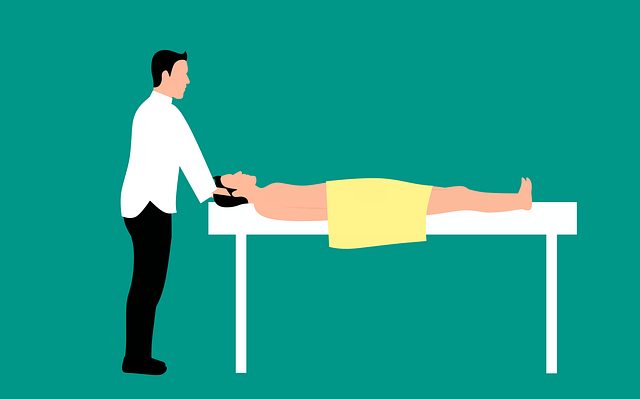Did you know that migraines affect about 12% of Americans? This debilitating condition can cause intense pain and a range of other symptoms, making it difficult to go about your daily life. If you’ve been struggling with migraines, you may have tried over-the-counter or prescription medications without much success or have experienced serious side effects. But here’s the good news: chiropractic care may be able to help. In this article, we’ll delve into the world of chiropractic care for migraines and explore how it can provide relief from the pain and discomfort you may be experiencing.
Migraines are characterized by severe headaches, sensitivity to light, and sensitivity to smells and sounds. They typically have four phases: prodrome, aura, headache, and postdrome. There are various triggers for migraines, including stress, hormonal changes, poor sleep, alcohol use, dietary habits, weather changes, and even certain smells. If you’re consistently experiencing migraines, it’s important to seek the help of a medical professional. They will be able to properly diagnose your condition and provide appropriate treatment options. However, chiropractors can also play a significant role in helping you manage your migraines. Through manual therapies like spinal manipulation, massage, and acupuncture, chiropractic care can provide relief from migraines and other types of headaches. We’ll go into more detail on the various techniques and lifestyle changes that chiropractors may recommend to help alleviate migraine symptoms. If you’re ready to take control of your migraines and find relief, keep reading to discover how chiropractic care could be the solution you’ve been looking for.
Chiropractic Care for Migraines
Migraines affect 12% of Americans, causing debilitating pain and other symptoms. Many individuals rely on over-the-counter or prescription medications to manage their migraines, but these options may not always be effective and can come with serious side effects. However, there is an alternative approach that may provide relief – chiropractic care.
Understanding Migraines and their Impact on Americans
Migraines are not just headaches. They are a complex neurological condition that can have a significant impact on a person’s daily life. In addition to severe head pain, migraines often come with other symptoms such as nausea, vomiting, light sensitivity, and sensitivity to smells and sounds. These symptoms can be so severe that they hinder an individual’s ability to work, study, or engage in daily activities.
According to studies, migraines affect approximately 12% of Americans. It is a prevalent condition that can significantly reduce the quality of life for those who experience it. The search for effective migraine treatment options is crucial, especially for individuals who have not found relief with conventional medications.
Symptoms of Migraines
To better understand migraines, it is essential to recognize the common symptoms associated with this condition. While the hallmark of a migraine is a severe headache, there are additional indicators that can help identify this neurological condition. These symptoms typically occur in specific phases, including prodrome, aura, headache, and postdrome.
The prodrome phase occurs before the actual headache and can last for several hours or even days. During this phase, individuals may experience various symptoms such as mood changes, food cravings, neck stiffness, and increased thirst or urination.
The aura phase is known for its sensory disturbances. It usually occurs before or during the headache and can manifest as visual disturbances, tingling in the face or limbs, difficulty speaking, or confusion.
The headache phase is when the intense pain takes center stage. The pain is often on one side of the head and can last for hours or even days. Individuals may also experience nausea, vomiting, and extreme sensitivity to light and sound during this phase.
Finally, the postdrome phase occurs after the headache subsides. Individuals may feel drained, confused, and moody during this phase. It can take hours or even days for this phase to resolve completely.

Triggers and Causes of Migraines
Understanding the triggers and causes of migraines is essential for effective treatment. Identifying common triggers can help individuals manage and avoid situations that may prompt a migraine episode. Some common triggers include stress, hormonal changes, poor sleep, alcohol use, dietary habits, weather changes, and exposure to strong smells.
Hormonal changes, particularly in women, can be a significant trigger for migraines. Fluctuations in estrogen levels during the menstrual cycle, pregnancy, or menopause can increase the likelihood of experiencing migraines.
Additionally, poor sleep quality and quantity can contribute to migraines. Lack of sleep or disrupted sleep patterns can disrupt the delicate neurological balance and trigger migraines in susceptible individuals.
The Importance of Seeking Medical Attention
If you are experiencing consistent migraines, it is crucial to consult a medical professional. Migraines can be a sign of an underlying health issue or may require specialized treatment to manage effectively. A medical professional can help diagnose the condition and recommend appropriate treatment options.
Ignoring consistent migraines can be dangerous as they can significantly impact your quality of life. Chronic migraines can lead to increased stress, anxiety, and depression, and can even interfere with work, relationships, and daily activities. Seeking medical attention can help prevent these negative consequences and improve your overall well-being.

Chiropractic Care for Migraines
Chiropractic care offers a non-invasive and drug-free approach to managing migraines. Chiropractors are trained to identify and treat spinal misalignments, which can contribute to the development of migraines. Through manual therapies such as spinal manipulation, massage, and acupuncture, chiropractors can alleviate tension, improve blood circulation, and promote overall relaxation.
Soft tissue therapy, which includes massage and other hands-on techniques, has been found to be effective in reducing the frequency and intensity of migraines. By targeting the muscles and tissues in the neck, shoulders, and head, massage therapy can release tension and alleviate pain associated with migraines.
Chiropractors also utilize spinal manipulation techniques to address spinal misalignments that may be contributing to migraines. These misalignments, particularly in the cervical spine, can cause nerve irritation and disrupt the proper functioning of the nervous system. By restoring proper alignment, chiropractors can alleviate nerve irritation and reduce the frequency and severity of migraines.
In some cases, chiropractors may recommend lifestyle changes that can minimize migraine triggers. This may include improving sleep hygiene, implementing stress management techniques, and adopting a healthy diet to reduce the likelihood of migraines.
Different Types of Headaches
While migraines are a common type of headache, it is essential to understand that there are other types as well. The connection between spinal misalignment and migraines extends to tension headaches and cervicogenic headaches.
Tension headaches are often characterized by a dull, aching pain that can wrap around the head. These headaches are typically caused by muscle tension and stress, which can result from spinal misalignments.
Cervicogenic headaches, on the other hand, are headaches that originate from structural problems in the neck. These headaches often present as a steady, dull ache that radiates from the neck to the head. Chiropractic care can be effective in treating these headaches by addressing the underlying structural issues in the neck.

Effective Treatments for Migraines
In addition to chiropractic care, there are other effective treatment options for migraines. Massage therapy has been shown to provide relief by reducing muscle tension and promoting relaxation. By targeting specific trigger points and releasing tension in the muscles, massage therapists can alleviate migraine symptoms.
Moreover, acupuncture has gained recognition as a highly effective treatment for migraines. By inserting thin needles into specific points on the body, acupuncture can stimulate the nervous system and promote the release of endorphins, which are natural pain relievers. This holistic approach can reduce the frequency and severity of migraines and provide long-term relief for many patients.
Conclusion
Migraines are a prevalent and complex neurological condition that can significantly impact a person’s quality of life. While medication may provide temporary relief, many individuals seek alternative treatment options due to insufficient results or unwanted side effects.
Chiropractors, with their expertise in spinal manipulation and manual therapies, can offer a non-invasive and natural approach to managing migraines. By addressing spinal misalignments, reducing muscle tension, and promoting overall relaxation, chiropractic care can provide long-lasting relief for individuals suffering from migraines.